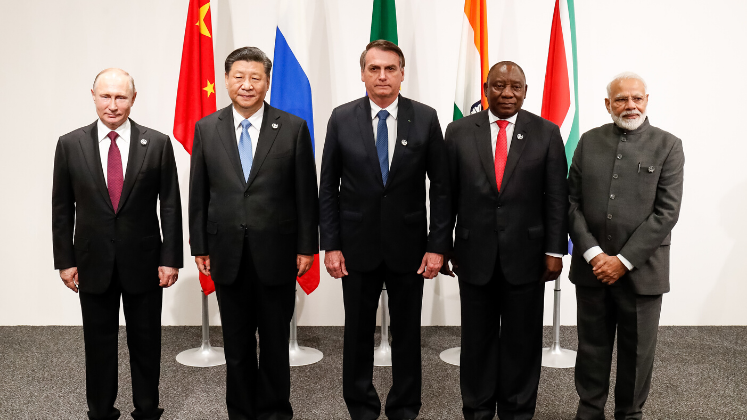In China and Latin America, Christopher Alden and Álvaro Méndez explore the evolving connections between China and Latin America. As the significance of China to Latin America becomes increasingly apparent, this book offers comprehensive reflection on the current political context and the historical dynamics of the relationship, writes Cheng Yeung Yang.
China and Latin America: Development, Agency and Geopolitics. Christopher Alden and Álvaro Méndez. Bloomsbury. 2023.
 Find this book (affiliate link):
Find this book (affiliate link):![]()
From China’s economic reliance on Latin American silver to ‘La Trata Amarilla’, cooperation between the two regions was primarily based on the exchange of commercial, agricultural and mining goods. Chinese immigrants sought employment in the construction of canals and railways, sugar plantations, guano and saltpetre mines and other industries in the latter half of the 19th century. Chinese immigrants of the 19th century settled in cities such as Lima, Tijuana, Panama City and Havana, where they established modest businesses that flourished as the community evolved over the subsequent decades, thus establishing the first close approaches between China and Latin America.
China and Latin America: Development, Agency and Geopolitics, authored by Christopher Alden and Álvaro Méndez, navigates a historical narrative of the relations between China and the Latin American region from their inception to the present. The book describes the great complexities that both regions have had to overcome, as well as how their relationship and social, economic and political dynamics have shaped what we can now observe as a rapidly expanding Chinese influence in the Western Hemisphere. Moreover, the authors demonstrate that when considering Sino-Latin American relations, it is crucial to situate the US. The relationships between Latin America, China and the US are characterised by very complex dynamics.

Image Credit: Crop of ‘PRIMERA REUNIÓN MINISTERIAL FORO CELAC CHINA, BEIJING, VISITA OFICIAL CHINA, 08 ENERO 2014’ by Cancillería del Ecuador licensed under CC BY SA 2.0
China’s geopolitical relationship with Latin America was negligible for decades. China and Latin America first engaged politically in the 1960s during the Cold War’s ideological conflict. As the Cold War divided the communist East from the capitalist West, this led to a succession of military regimes that supported US interests while China focused on its domestic and regional issues. As democracy spread across Latin America in the late 20th century, so did the US’s pragmatic approach to China. Resources and trading drove China’s entry into the Latin American market.
Upon the establishment of the People’s Republic of China, the Communist Party promoted relations with Latin America based on an anti-imperialist cultural and ideological rapprochement. In 1960, under Fidel Castro, Cuba was the first country in the region to recognise the People’s Republic of China. Therefore, China was able to envision a minor shift in its regional projection, shifting from cultural exchanges and partisan diplomacy to a strengthening of progressive political partnerships.
However, in the next few years, political relations were minimal during Mao Zedong’s government. Later, in 1978, under the leadership of Deng Xiaoping, China launched a reform programme based on the adoption of socialist market principles, which consisted primarily of two components: internal adjustment and foreign opening. As a result of this ‘new socialist market economy’, China’s society witnessed tremendous internal upheaval. China restored diplomatic links with several Latin American states through its open foreign policy. A new horizon of diplomatic ties was created and developed into what Alden and Méndez allow us to observe in the book as one of the most fast-growing dynamics in contemporary politics.
In the third chapter, the cases of Chile, Peru and Argentina are presented. Chile’s relationship with China has been influenced more than any other Pacific coast state in Latin America by the broader framework of Asia-Pacific trade agreements and associated activities. Regarding Peru, by reaching out to Beijing and enshrining an economic link through mechanisms such as the 2009 Peru-China Trade Agreement, this has brought a wave of Foreign Direct Investments to Peru’s shores, expanded market opportunities in both countries and sparked a new cycle of commodity-driven prosperity.
In the case of Argentina, the political theatre of changing leadership and political parties has obscured the continuity that has served to preserve the partnership. Opportunities abound, from middle-class consumers to strategic resources, and politicians such as former President Mauricio Macri and the Kirchner dynasty have recognised the benefits of Chinese investment and loans in resources, infrastructure and e-commerce. Chinese confidence in Argentina’s long-term prospects — echoed to varying degrees in other regions — indicates a willingness to ground bilateral ties in elite and commercial relationships.
Subsequently, we are introduced to the Bolivarian republics of Venezuela, Ecuador and Bolivia. The Bolivarian nations, determined to overcome their historical reliance on the US, discovered in China a willing, if wary, partner. China’s development of financial and technological resources in petroleum, building and other sectors was used specifically to recoup losses and develop long-term growth potential in these industries. The continuous increase in commodity prices allowed these governments to seek rents from export tax income and transfer them to economic and social programmes aimed at traditionally underserved communities. Beijing’s avowed commitment to non-interference in internal matters ensured that strengthening economic cooperation would not result in the interventionism that accompanies US dependency.
In the fifth chapter, the authors examine the case of Brazil. The country with the largest economy and population in Latin America has natural resources, a thriving agro-industry, technical prowess in key industries and a large market that has attracted Chinese companies and financial resources. The Brazilian-Chinese partnership is the most economically robust, technologically focused and internationally significant in Latin America. Beijing established a partnership that reflects many of the economic complementarities that have contributed to the growth of both nations. There has been an international push to institutionalise cooperation via the China-Brazil High-Level Coordination and Cooperation Committee (COSBAN) and other mechanisms, such as the China-Brazil Fund for Expansion of Production Capacity and the BRICS alliance of Brazil, Russia, India, China and South Africa. This has demonstrated how these opportunities could be translated into concrete initiatives at both state-to-state and private investment levels, expanding cooperation into new industries beyond natural resources.
Different from the above cases, Mexico’s relationship with China shows Beijing’s struggles to translate economic power into tangible results. Mexico’s attitude toward the North American Free Trade Agreement (NAFTA) is the main reason Chinese companies have had trouble entering sectors of the Mexican economy like railway infrastructure and energy. Chinese competition is seen as a major threat to Mexico’s economic standing in the US, which explains its lukewarm response to China’s overtures. Since 2017, Mexico’s policy toward China changed due to President Donald Trump prompting deteriorating diplomatic relations with the US, the US-China trade war and the late realisation that the country needs to reach out to new markets, sources of investment and technological innovation to prosper.
From the perspective of most governments in Latin America and the Caribbean, prospective Chinese development finance, access to its market and the arrival of its tourists were seen to be a net gain for their economies. The subsequent dismantling of diplomatic recognition of Taiwan in Latin America, which had served as a de facto bulwark of US interests, coupled with the escalating surge in Chinese finance in other countries in the area, was enough to warrant a hard look at its impact on US strategic interests.
As portrayed by Alden and Méndez, the importance of China in Latin America and the Caribbean is becoming increasingly tangible and obvious to politicians, academics, businesses and Latin American civil society. In less than seven decades after its founding in 1949, the People’s Republic of China has become one of the continent’s major economic and political actors.
This book offers a comprehensive reflection not only on the current political context but also leads us through the background history that has shaped the present-day dynamics. Undoubtedly, China and Latin America will be an enjoyable read for students, professionals and the general public with an interest in the complex contemporary political issues presented in Alden and Méndez’s study.
Note: This review gives the views of the author, and not the position of the LSE Review of Books blog, or of the London School of Economics and Political Science. The LSE RB blog may receive a small commission if you choose to make a purchase through the above Amazon affiliate link. This is entirely independent of the coverage of the book on LSE Review of Books.






